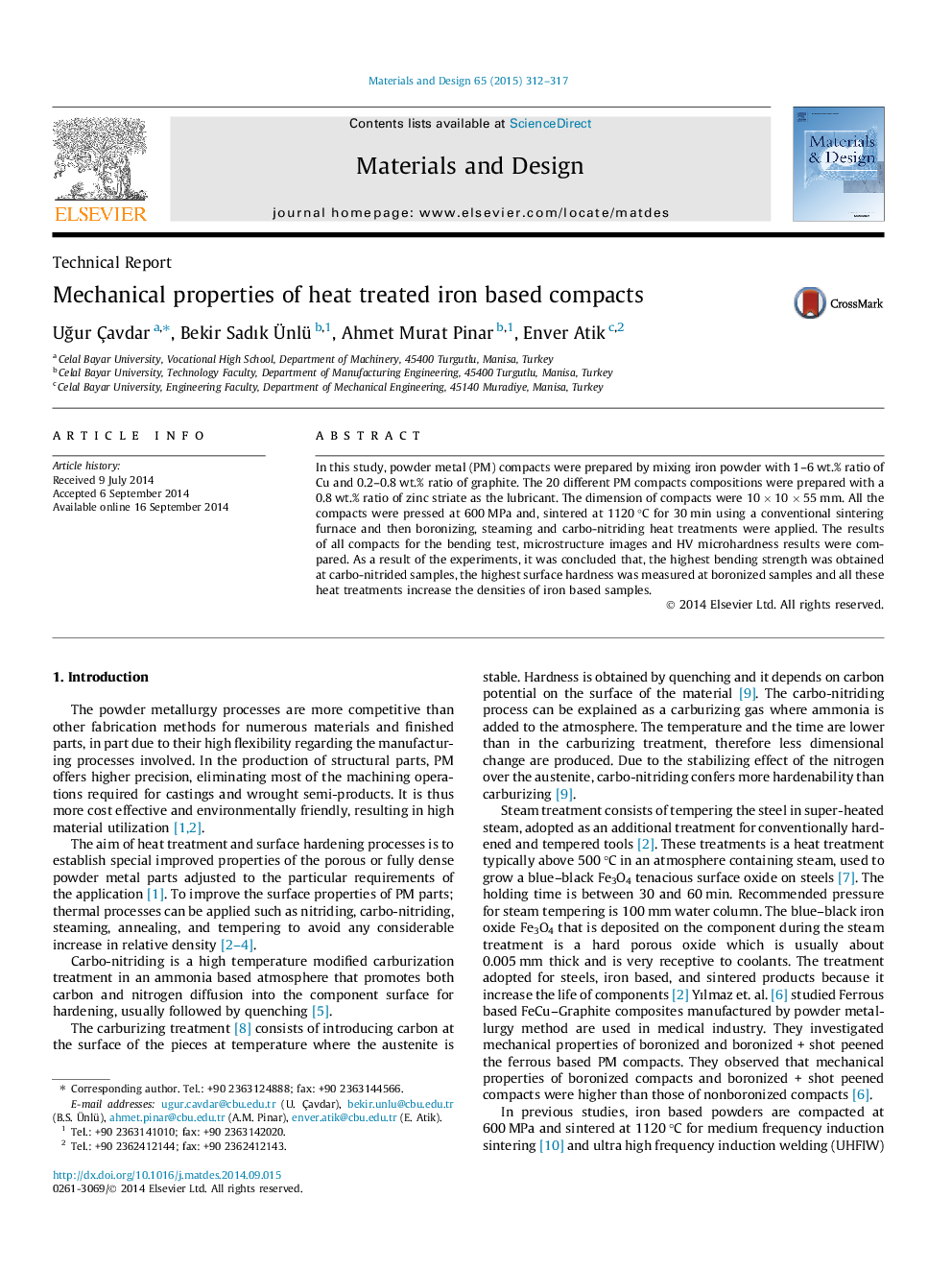| Article ID | Journal | Published Year | Pages | File Type |
|---|---|---|---|---|
| 828810 | Materials & Design (1980-2015) | 2015 | 6 Pages |
•Higher bending strengths are obtained for carbo-nitrided compacts than boronized or steamed compacts.•Boronized compacts have higher surface hardness than steamed or carbo-nitrided compacts for several compositions.•The highest density obtained for boronized compacts rather than steamed or carbo-nitrided compacts.
In this study, powder metal (PM) compacts were prepared by mixing iron powder with 1–6 wt.% ratio of Cu and 0.2–0.8 wt.% ratio of graphite. The 20 different PM compacts compositions were prepared with a 0.8 wt.% ratio of zinc striate as the lubricant. The dimension of compacts were 10 × 10 × 55 mm. All the compacts were pressed at 600 MPa and, sintered at 1120 °C for 30 min using a conventional sintering furnace and then boronizing, steaming and carbo-nitriding heat treatments were applied. The results of all compacts for the bending test, microstructure images and HV microhardness results were compared. As a result of the experiments, it was concluded that, the highest bending strength was obtained at carbo-nitrided samples, the highest surface hardness was measured at boronized samples and all these heat treatments increase the densities of iron based samples.
Graphical abstractIn this work, 20 different iron based powder metal (PM) compositions were pressed at 600 MPa and sintered at 1120 °C for 30 min using a conventional sintering furnace, and then boronizing, steaming and carbo-nitriding heat treatments were applied. The results of all the heat treated compacts for the effects of bending test, microstructure images and HV microhardness results were investigated. Microstructure and SEM images were compared for all heat treated PM compacts. Micro structure image of the carbo-nitrided iron based PM compact is given as follows: The thickness of carbo-nitride layer is measured from the microstructure images of the compacts. All results were calculated from the average of the three recorded measurements. The average thickness of the boronizing, carbo-nitriding, and steaming layers were observed; 162 μm, 124 μm, and 5 μm respectively. As a results this paper illustrated that what are the advantages and disadvantages of the boronizing, carbo-nitriding, and steaming heat treatments for the iron based PM samples.Figure optionsDownload full-size imageDownload as PowerPoint slide
